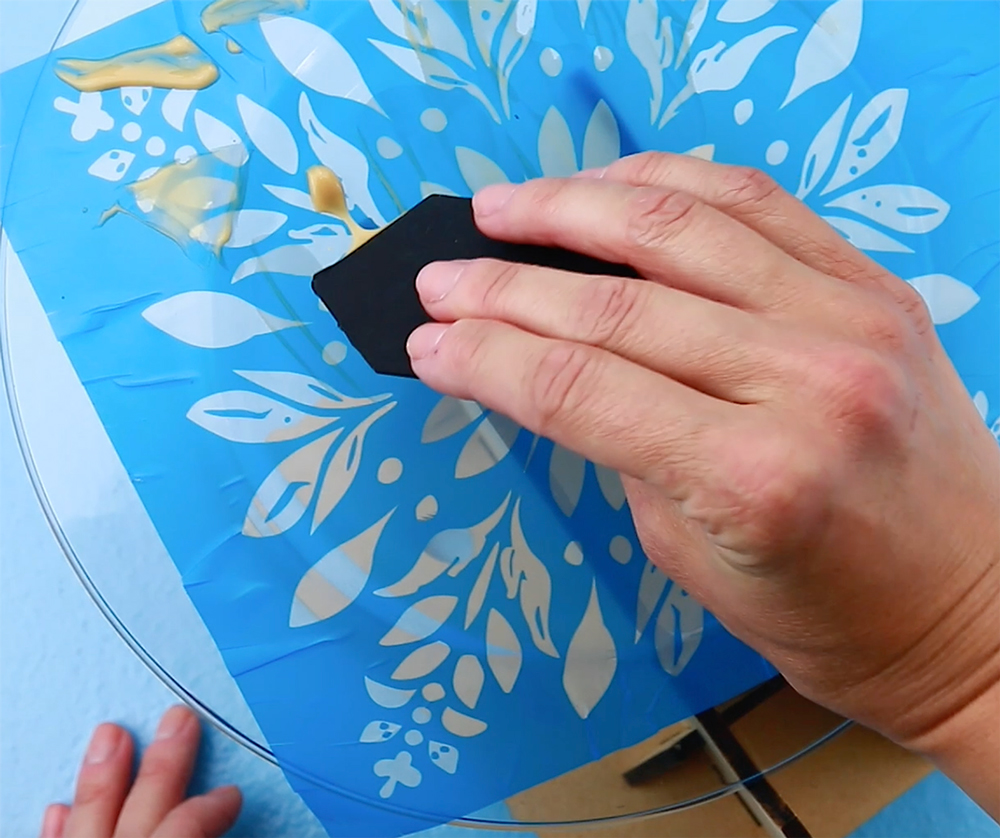Etched glass designs have an air of elegance and sophistication that can transform ordinary glassware into personalized works of art.
Whether you're looking to craft stunning gifts or elevate your home decor, using custom Ikonart stencils with Etchall Etching Crème can help you achieve impressive results. In this guide, we'll walk you through the process and share essential tips for achieving a flawless etch on glass.
How To Etch Glass With Ikonart Stencils and Etchall Etching Crème
If you're a fan of DIY crafts and want to add a touch of elegance to your glassware, mirrors, or other glass surfaces, combining your Ikonart Custom Stencil Kit with Etchall Etching Crème is a fantastic way to achieve stunning etched designs. This dynamic duo allows you to transform ordinary glass items into personalized masterpieces that will leave everyone impressed.

Materials You'll Need
- Ikonart Custom Stencil Kit: This kit includes the stencil film, a carrier sheet, and a squeegee
- Etchall Etching Crème: A safe and easy-to-use etching solution
- Glass Surface: Choose glassware, mirrors, or any other glass item you want to etch
- Painter's Tape: For protecting surrounding areas
- Gloves: Safety first! Always protect yourself when working with chemicals
- Soft Cloth: For wiping off excess etching crème
- Timer: To keep track of the etching time
- Optional: Rub n' Buff or colored wax to add color

Step 1. Choose the Right Ikonart Stencil Film & Make Stencil
Selecting the appropriate stencil film is crucial for achieving crisp and intricate etched designs. Ikonart offers a range of stencil films, but when it comes to glass etching, the blue stencil film is your best friend. It strikes the perfect balance between holding fine details and adhering securely to glass surfaces. While the purple stencils are fantastic for other projects, they can be a tad too sticky for glass, potentially leading to difficulties during application and removal.
Step 2. Choose the Right Etching Cream
The choice of etching crème plays a pivotal role in the success of your glass etching endeavor. Etchall Etching Crème is highly recommended for use with Ikonart stencils. Its formulation is tailored to work seamlessly with the stencil material, ensuring clean lines and optimal results. It's worth noting that using alternative brands can jeopardize the integrity of your stencils, potentially rendering them unusable.
Step 3. Apply Stencil & Banish Bubbles for a Flawless Finish
Before applying the etching crème, ensure your stencil is perfectly adhered to the glass surface. To achieve this, employ the white plastic squeegee provided in the Ikonart Kit. By "burnishing" or gently rubbing the stencil, you'll eliminate any pesky air bubbles that could allow the etching cream to seep beneath the stencil edges, leading to blurred lines.
OPTIONAL: Steadiness is key when applying the etching crème. Prevent glass from rolling around during the application process by using a Smart Jig. This handy tool keeps your glass securely in place, allowing you to apply the cream with confidence.

Step 4. Apply a Thick Double Layer of Cream for Even Etching
For a consistently even etch, consider a two-step approach to applying the etching crème. Start by spreading the cream across the stencil's mesh openings using the plastic squeegee. Once this base layer is in place, add a generous, thick layer of the cream over the entire stencil. This technique guarantees thorough coverage and a professional finish.
Step 5. Remove Excess Cream and Rinse
After around 15 minutes of allowing the etching cream to work its magic, it's time to remove the excess. Gently scrape off the excess cream and return it to the bottle for future use (yes, it's reusable!). To complete the process, wipe away any remaining cream using a paper towel before rinsing both the stencil and glass. While small amounts of the cream can be washed off in the sink, it's advisable to use as little as possible to minimize environmental impact.

Why Won't My Glass Etch?
If your glass isn’t etching as expected, it could be due to the type of glass you are using. Some glass, particularly heat-resistant varieties like borosilicate glass (commonly used for certain kitchenware, like Pyrex), is formulated to withstand high temperatures and resist chemical reactions. This resistance makes it less susceptible to the etching action of etching creams, which rely on a chemical reaction with the surface of the glass to create the etched effect.
Heat-resistant glass has a different composition, including higher levels of silica and other additives, which creates a more durable and less reactive surface. When choosing glass for your etching projects, opt for standard soda-lime glass, which is more receptive to etching creams like Etchall.
Questions? We're Here to Help
Embarking on a glass etching project using Ikonart Stencils and Etchall Etching Crème can yield breathtaking results. We're here to guide you through the process and ensure your glass etching journey is both enjoyable and rewarding. If you have any questions or need assistance along the way, feel free to contact the Ikonart team or post in the Ikonart Crafters Facebook Group.

